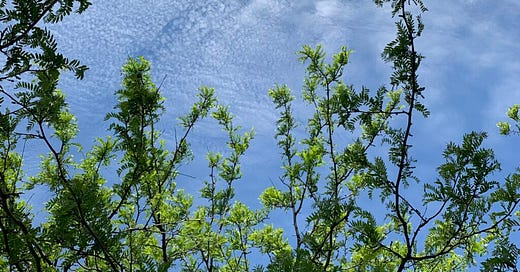CDWC #36 - Attention, Writing, and Editing
On writing and editing as a complex attentional skills
Following from last week's post on deep work, we've been thinking a bit more about attention. Skill in writing is, among other things, skill with subtleties of attention. So let's explore that!
Attention: Some Nuances
Cultural scripts around attention are somewhat broken. The intuitive metaphor for attention is something like a spotlight, which decades of cognitive science have shown to be a simplistic way to think. So let's give a slightly more nuanced analysis.
Attending involves at least three distinct kinds of shifts: figure-ground, feature-gestalt, and transparency-opacity. When we talk about moving attention, we are really talking about one or more of these shifts.
Figure-ground shifting tracks what you foreground and what gets relegated to the background. For example, imagine talking to a person at a loud party. You have to exert some effort to foreground their voice and background all the other sounds. Often we fail to sustain our attention in this way; for example, someone may call out your name and suddenly you're foregrounding something else.
Feature-gestalt shifting tracks whether you attend small structures or large ones—whether we are noticing the proverbial forest or trees. We all know what it's like to attend more widely or more narrowly.
Transparency-opacity shifting tracks whether we focus on or through some layer of our attention. Imagine looking at a storefront's pane of glass. You can attend to your partial reflection in the glass, or you can attend to what's behind the glass. Similarly, when writing a sentence you can focus on the meaning you intend to convey or you can focus on the specific phrasing. In the former case, the words you use are more transparent to you than in the latter case. Attention is intricately layered, and it's surprising what we can make transparent and opaque to ourselves with a bit of practice!
Habits of Attention
These three shifts often happen together. Usually, when we focus on the gestalt, we're also making a lot of stuff transparent to us, and when we focus on the features, we're making a lot more stuff opaque to us. Both moves involve subtle shifts in what is foreground and what is background. There are probably also other sorts of moves that haven't been described yet. Attention is complicated!
That said, we think that this rough scheme makes editing a bit more transparent (ha!) as a skill set. Different phases of writing draw on different attentional moves. Editing involves taking the natural attentional moves writers make and dialing them up further.
Forest and Trees
Writers have to move from the features to the gestalt in all sorts of contexts: laying out plots, judging whether there is enough tension in a piece of writing, keeping things consistent across chapters, making sure writing flows, or making sure arguments make sense. The reverse move from forest to trees is also important: laying out the specific of dialogue, setting the stage properly, finding just the right adjective, and so on.
Developmental editing is a process of assessing a piece of writing as whole. Skilled developmental editors tune their attention far out into the gestalt direction, so that the forest of the piece is foremost in their mind. Editorial suggestions in developmental editing serve to make the feature-gestalt shift easier for the writer as well, since writers have to balance between the features and the gestalt in a way that editors don't.
Transparency and Opacity
Writers move back and forth between these all the time as well. For example, you know where a paragraph is going, but now you have to move through it sentence by sentence. To do this, you have to make your words more opaque to you. Or you find yourself in the weeds of a description, but you lost your way, so you make the words more transparent by attending to the function of the sentence you just wrote.
Copyediting involves editors assessing the text with their attention tuned far in the opacity direction. This allows editors to catch errors, unclear phrasing, or unnecessary verbiage that writers can't catch for themselves because since writers know exactly what they mean when they write something, the details naturally become more transparent.
We hope you found this brief dip into attention helpful for your own work, whatever it may be. Greater attention to attention is the way we reclaim our habits, our energy, and our capacity to work deeply and meaningfully, whatever the work may be.





